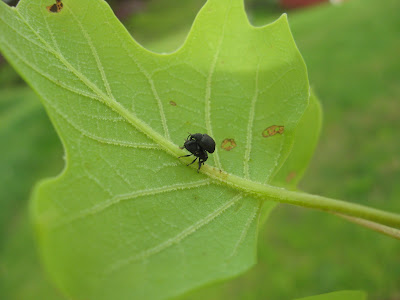Usually when I find weevils (Coleoptera: Curculionoidea), they're tiny, relatively bland, or....."otherwise occupied." Tulip Tree Weevils ( Odontopus calceatus ) , otherwise occupied. While researching assassin bugs this summer at the Barbara A. Beiser Field Station, however, I came across a much more charismatic weevil, the oak timberworm ( Arrhenodes minutus ). Not quite on an oak, this guy was picked up during sweep netting. If you compare the oak timberworm with the tulip tree weevils in the previous picture, you'll probably notice quite a difference in size and body shape. The oak timberworm doesn't have elbowed antennae, either. So what gives? The oak timberworm is a species of primitive weevil (Subfamily Brentinae), which look very different from other weevils. They're characterized by their straight snouts (their family is the straight-snouted weevils, Brentidae, after all), antennae that aren't elbowed, and the tendency of their body shape to usu...

